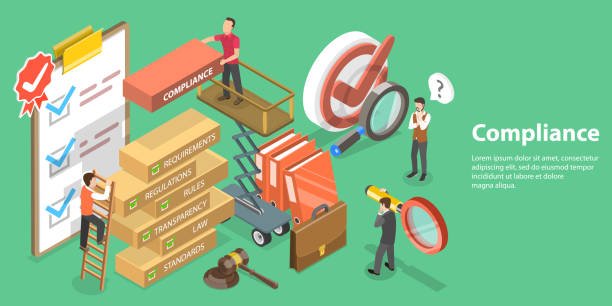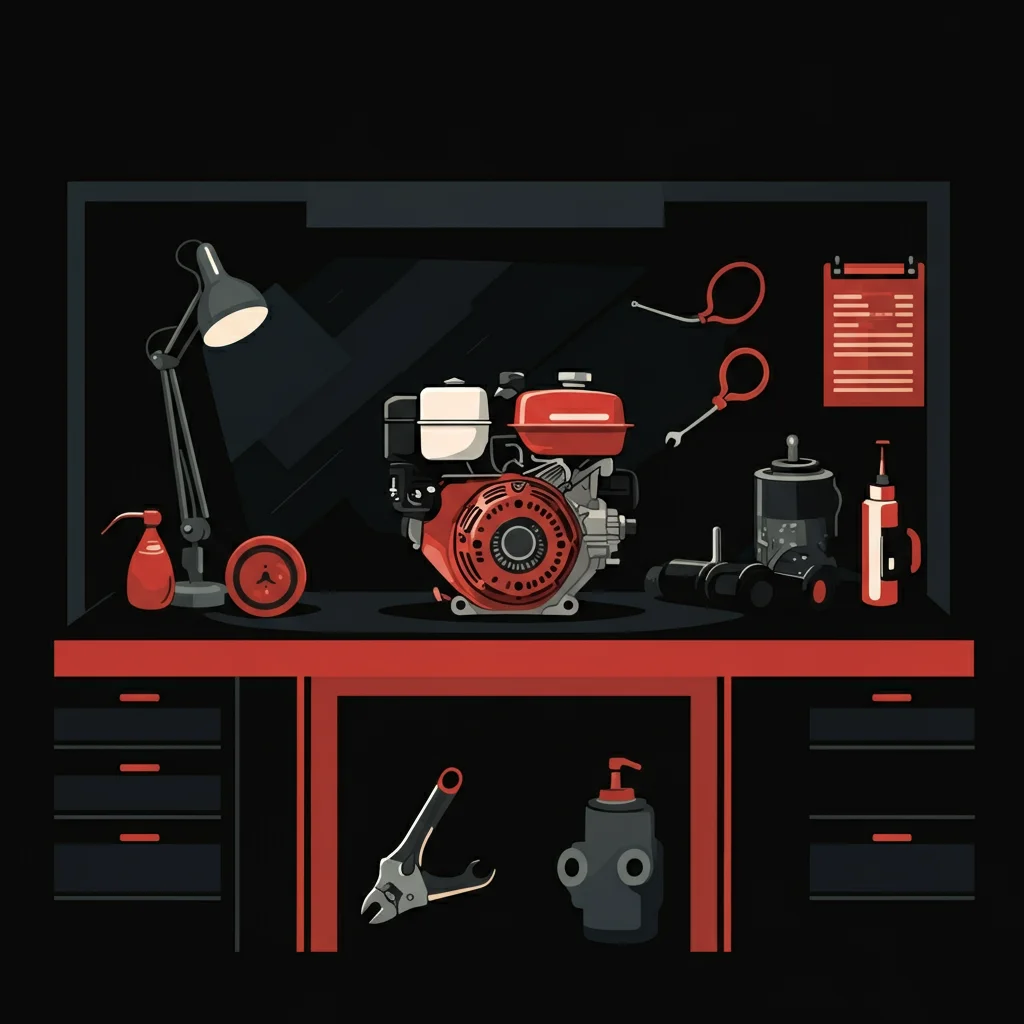How to Start a Small Engine Repair Business from Home, offers an excellent opportunity for mechanically inclined individuals to turn their skills into a profitable venture. With Americans owning over 90 million pieces of outdoor power equipment—from lawnmowers and leaf blowers to chainsaws and generators—the demand for reliable repair services continues to grow steadily.
The appeal of a home-based engine repair business extends beyond just market demand. This business model provides exceptional flexibility, allowing you to set your own schedule while maintaining low overhead costs. Unlike traditional brick-and-mortar repair shops that require substantial initial investments for commercial space, insurance, and utilities, operating from home significantly reduces your startup expenses.
Your mechanical expertise becomes even more valuable when you consider that many equipment owners lack the knowledge or tools to perform repairs themselves. While online repair tutorials exist, they often fall short when dealing with complex engine problems that require professional diagnosis and specialized tools. This gap between DIY limitations and professional expertise creates a perfect niche for home-based repair services.
The scalability of this business model makes it particularly attractive. You can start small, handling a few repairs each week, then gradually expand your services and customer base as demand grows. Many successful repair business owners began exactly this way—working part-time from their garage before eventually transitioning to full-time operations or even expanding into commercial spaces.
Understanding Your Market and Competition

Before launching your small engine repair business, conducting thorough market research helps identify opportunities and understand your competitive landscape. Start by assessing the types of equipment most commonly used in your area. Suburban neighborhoods with extensive lawns typically generate high demand for lawnmower repairs, while rural areas may need more chainsaw and generator services.
Local small engine repair shops represent your primary competition, but they also provide valuable market intelligence. Visit established businesses in your area to observe their service offerings, pricing structures, and customer wait times. Many traditional repair shops struggle with long turnaround times, especially during peak seasons, creating opportunities for home-based businesses to compete on speed and convenience.
Mobile repair services offer another competitive model worth studying. These businesses eliminate the inconvenience of customers transporting heavy equipment, but they often charge premium prices to offset travel time and vehicle expenses. Your home-based shop can potentially offer competitive pricing while still providing pickup and delivery services for an additional fee.
Analyze online reviews of existing repair shops to identify common customer complaints. Frequent issues include poor communication, unexpected additional charges, and extended repair times. These pain points represent opportunities for your business to differentiate itself through superior customer service and transparent pricing.
Consider seasonal demand patterns in your research. Spring and early summer typically bring peak demand as customers prepare equipment for the growing season, while fall generates additional business from pre-winter maintenance and storage preparation. Understanding these cycles helps with inventory planning and cash flow management.
Creating Your Business Plan and Defining Services
A comprehensive business plan serves as your roadmap to success and helps secure financing if needed. Begin by clearly defining your target market and service offerings. Will you specialize in specific equipment types, such as lawn and garden equipment, or provide broader small engine repair services including generators, pressure washers, and recreational vehicles?
Your pricing strategy should reflect both your costs and market positioning. Research shows that average repair service costs range from $50 to $150 per job, depending on complexity and parts required. Consider implementing a diagnostic fee of $25 to $50 that applies toward the total repair cost if customers approve the work. This approach compensates you for time spent evaluating equipment while encouraging customers to proceed with repairs.
Revenue projections help establish realistic income expectations. Assuming you complete 20 to 30 jobs monthly at average prices, potential monthly revenue ranges from $1,000 to $4,500. However, remember that parts and materials typically consume 20% to 30% of revenue, leaving net profit margins between 50% and 70% depending on your efficiency and pricing strategy.
Annual income potential varies significantly based on your commitment level and market conditions. Part-time operations might generate $12,000 to $18,000 annually, while full-time dedication could produce $30,000 to $54,000 or more. Successful businesses often expand services to include equipment sales, seasonal storage, or maintenance contracts, further increasing revenue opportunities.
Define your service standards and turnaround times clearly. Many customers appreciate same-day diagnosis with repair completion within 48 to 72 hours for common issues. Establishing clear expectations upfront prevents misunderstandings and builds customer confidence in your professionalism.
Legal Requirements and Business Registration

Operating a home-based small engine repair business requires compliance with various legal and regulatory requirements. Start by registering your business with your state and local authorities. Choose an appropriate business structure—sole proprietorship offers simplicity for beginners, while LLC formation provides liability protection and potential tax advantages.
Obtain necessary licenses and permits for your location. Most areas require general business licenses, and some municipalities mandate specific permits for automotive or mechanical repair work. Contact your local business licensing office to understand all requirements and associated fees, typically ranging from $100 to $500 total.
Zoning regulations present a critical consideration for home-based businesses. Many residential areas restrict commercial activities, particularly those involving customer visits or generating noise. Review your local zoning ordinances carefully, and consider applying for a home occupation permit if required. Some areas limit the percentage of your home’s square footage used for business purposes or restrict outdoor storage of customer equipment.
Insurance coverage protects your business and personal assets. General liability insurance covers customer injuries or property damage, while professional liability insurance protects against claims related to your repair work. Expect to pay $500 to $1,500 annually for comprehensive coverage, depending on your location and coverage limits.
Consider establishing a separate business bank account and credit card to simplify bookkeeping and demonstrate business legitimacy. This separation also facilitates tax preparation and provides clear documentation of business expenses for deduction purposes.
Setting Up Your Workspace and Equipment
Your workspace setup significantly impacts efficiency and customer perception. A clean, organized garage or dedicated outbuilding provides an ideal environment for most home-based repair operations. Ensure adequate lighting—LED shop lights offer bright, energy-efficient illumination for detailed work. Proper ventilation becomes essential when working with fuels, solvents, and cleaning chemicals.
Essential tools for small engine repair include a comprehensive wrench set, screwdrivers, pliers, spark plug tester, compression tester, and multimeter. Specialized tools such as flywheel pullers, valve adjustment tools, and carburetor cleaning equipment become necessary as your business grows. Budget $1,000 to $5,000 for initial tool investment, prioritizing quality over quantity for frequently used items.
Establish efficient parts inventory management from the beginning. Common replacement parts include spark plugs, air filters, fuel filters, primer bulbs, and pull cords. Maintain relationships with local parts suppliers and consider establishing wholesale accounts with major distributors. Online suppliers often offer competitive pricing, but factor shipping times into your turnaround promises.
Create dedicated storage areas for customer equipment, keeping repaired items separate from those awaiting service. Use tags or a simple tracking system to monitor each piece of equipment through your repair process. Professional appearance and organization build customer confidence and streamline your workflow.
Workspace setup costs typically range from $200 to $500 for shelving, lighting improvements, and organizational systems. Consider these expenses as investments in efficiency and professional appearance rather than mere overhead costs.
Marketing Your Home-Based Repair Business
Effective marketing strategies focus on reaching local customers who need your services. Local SEO optimization ensures your business appears when potential customers search for “small engine repair near me” or similar terms. Create a Google My Business listing with accurate contact information, service descriptions, and customer photos of completed repairs.
A simple website builds credibility and provides 24/7 information access for potential customers. Include your service areas, typical turnaround times, and contact information. Customer testimonials and before-and-after photos demonstrate your expertise and reliability. Many website builders offer affordable, professional-looking templates specifically designed for service businesses.
Social media marketing, particularly on Facebook and Instagram, allows you to showcase your work and connect with local customers. Share photos of interesting repairs, maintenance tips, and customer success stories. Local community groups on social media often welcome service provider recommendations, providing valuable networking opportunities.
Networking with complementary businesses generates valuable referrals. Landscaping companies, garden centers, and equipment dealers often encounter customers needing repair services. Offer referral incentives or reciprocal arrangements to build these relationships.
Traditional advertising methods remain effective for local service businesses. Consider classified ads in local newspapers, bulletin board postings at community centers, and participation in local trade shows or home improvement events. Budget $100 to $300 monthly for marketing activities, adjusting based on results and seasonal demand.
Successful Business Examples and Strategies
John’s Small Engine Repair in rural Iowa demonstrates the power of understanding your local market. Operating from his garage, John focused on serving farmers and rural homeowners who relied heavily on outdoor equipment. His success stemmed from building personal relationships with customers and offering flexible scheduling to accommodate harvest seasons and emergency repairs. By specializing in agricultural equipment and maintaining extensive parts inventory for common rural brands, John created a loyal customer base willing to recommend his services throughout the farming community.
TechFix Mobile in suburban California took a different approach, initially operating as a mobile service before transitioning to a home-based shop. The owners discovered that eliminating travel time allowed them to complete more repairs daily while reducing fuel costs. They leveraged online advertising and local SEO to attract suburban customers who appreciated quick turnaround times and competitive pricing. Their success highlights the importance of adapting your business model based on customer preferences and operational efficiency.
GreenPro Repairs in urban Texas found success by specializing in eco-friendly repairs and maintenance services. They attracted environmentally conscious customers by emphasizing proper disposal of fluids and parts, offering maintenance packages to extend equipment life, and promoting energy-efficient equipment upgrades. Their targeted approach to a specific customer segment allowed premium pricing while building strong brand loyalty.
These examples illustrate that success comes from understanding your unique market position and delivering consistent value to customers. Whether through specialized knowledge, superior service, or innovative approaches, successful home-based repair businesses find ways to differentiate themselves from larger competitors.
Managing Operations and Customer Service
Efficient operational systems separate successful repair businesses from struggling ones. Implement a simple appointment scheduling system to manage customer drop-offs and pickups. Many businesses use basic scheduling software or even a dedicated phone line with voicemail to coordinate customer communications professionally.
Establish clear diagnostic and repair procedures to ensure consistency and efficiency. Create a standard intake form documenting customer contact information, equipment details, reported problems, and any accessories included. Photograph equipment condition upon receipt to prevent disputes and document your repair work for customer education.
Communication management significantly impacts customer satisfaction. Provide realistic turnaround estimates and update customers promptly if delays occur. Many successful businesses send text message updates when repairs are completed, improving customer convenience while demonstrating professionalism.
Handle customer complaints promptly and professionally. Listen carefully to concerns, acknowledge any valid issues, and work toward fair resolutions. Remember that satisfied customers who experienced problems initially often become your most loyal advocates if you handle their concerns effectively.
Develop relationships with parts suppliers to ensure quick access to common replacement components. Some businesses maintain agreements with multiple suppliers to avoid delays when primary sources experience inventory shortages.
Financial Management and Growth Planning
Sound financial management ensures long-term business success and provides data for growth decisions. Track all income and expenses meticulously, using accounting software designed for small businesses or even simple spreadsheet systems initially. Document mileage for parts pickup, supply purchases, and equipment pickup/delivery for tax deduction purposes.
Monitor key performance metrics such as average repair value, monthly job volume, and customer retention rates. These measurements help identify trends and opportunities for improvement. Calculate your actual hourly earnings by dividing net profit by hours worked, ensuring your pricing strategy provides adequate compensation for your time and expertise.
Cash flow management becomes particularly important for seasonal businesses. Plan for slower winter months by building reserves during peak seasons or considering complementary services such as snow blower repairs or generator maintenance contracts.
Growth opportunities might include expanding service offerings, hiring additional technicians, or transitioning to a commercial location. Evaluate each option carefully, considering your personal goals, market demand, and financial capacity. Some businesses grow by specializing deeper in specific equipment types, while others expand geographically or add related services such as equipment sales or rental.
Frequently Asked Questions
What specific tools are essential for starting this business?
Essential tools include a comprehensive wrench set (metric and standard), various screwdrivers, needle-nose and standard pliers, spark plug tester, compression tester, and multimeter. Specialized tools like flywheel pullers and valve adjustment tools become necessary as you take on more complex repairs. Quality tools ensure accuracy and durability, making them worthwhile investments.
How can I effectively compete with established repair shops?
Focus on your unique advantages: personalized service, flexible scheduling, competitive pricing, and faster turnaround times. Build strong customer relationships through excellent communication and transparent pricing. Leverage local SEO and social media to increase visibility among potential customers seeking alternatives to larger, less personal repair shops.
What are the best ways to market my home-based repair business locally?
Implement local SEO optimization, create a Google My Business listing, and maintain active social media presence. Network with landscaping companies and equipment dealers for referrals. Offer new customer discounts and encourage satisfied customers to leave online reviews. Participate in local events and community groups to build awareness.
How do I handle customer service and manage expectations from home?
Establish professional communication channels including a dedicated business phone line and email address. Set realistic turnaround times and provide regular updates on repair progress. Create clear policies for estimates, diagnostic fees, and warranty terms. Handle any complaints promptly and professionally to maintain positive reputation.
What are the common pitfalls to avoid in the first year of business?
Avoid underpricing services, which undervalues your expertise and creates unsustainable profit margins. Don’t skip proper business registration and insurance coverage. Resist taking on repairs beyond your skill level without proper research and preparation. Maintain organized record-keeping from day one to simplify tax preparation and business analysis.
Building Your Path to Success
Starting a small engine repair business from home offers an excellent opportunity to build a profitable venture with relatively low startup costs and high flexibility. Success depends on thorough preparation, understanding your local market, and consistently delivering quality service that differentiates your business from competitors.
The financial potential ranges from supplemental income to full-time earnings, depending on your commitment level and market conditions. With startup costs between $1,500 and $6,000 and potential annual income reaching $37,800 or more, this business model offers attractive returns for mechanically skilled individuals.
Focus on building strong customer relationships through excellent communication, fair pricing, and reliable service. Your home-based advantage allows for personalized attention that larger repair shops often cannot match. As your reputation grows and customer base expands, opportunities for business growth and increased profitability will naturally follow.
Take the first step by researching your local market conditions and legal requirements. With proper planning and dedication to customer service excellence, your small engine repair business can provide both financial rewards and personal satisfaction from helping customers keep their essential equipment running smoothly.
Legal Disclaimer: This guide provides general information and should not be considered legal or financial advice. Consult with local authorities and legal professionals to ensure full compliance with all applicable laws and regulations. The business owner is responsible for verifying the accuracy and completeness of information related to permits, licenses, and compliance requirements.
Learn About: How to Start a Small Bakery Business from Home


